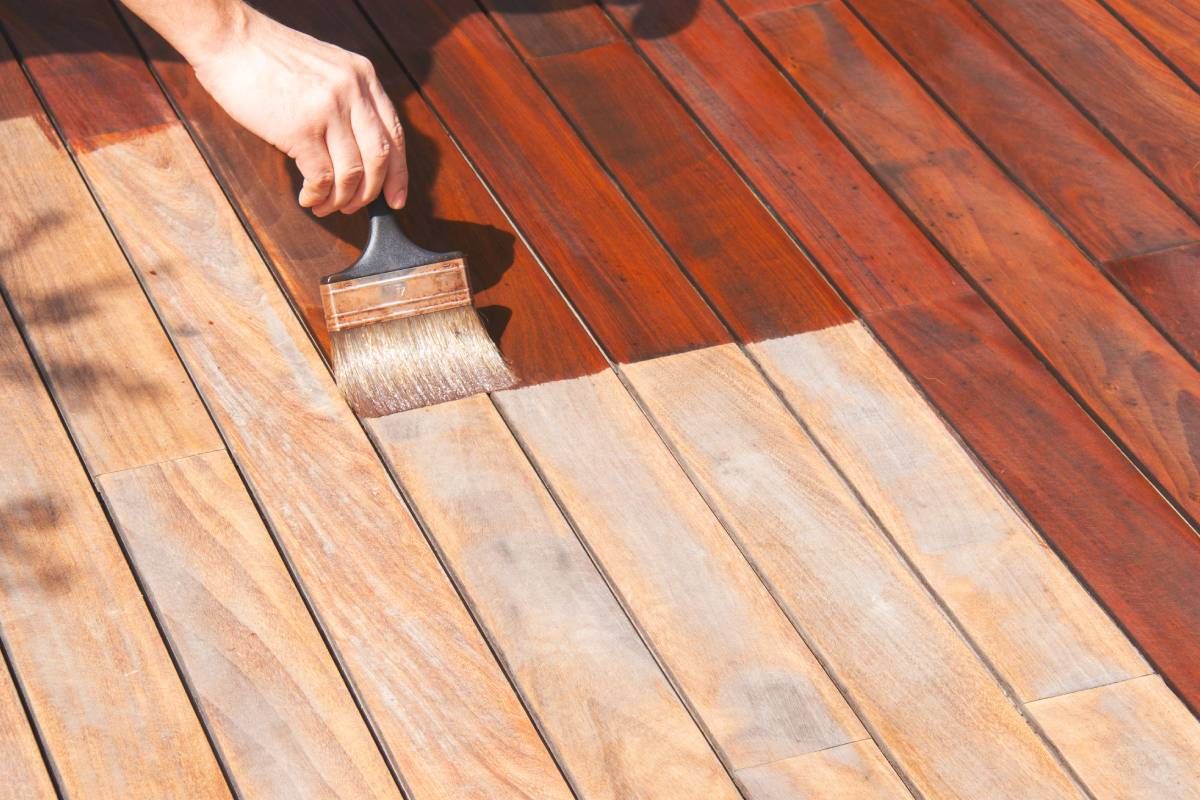Why Your Stain Choice Matters
Exterior wood in the Pacific Northwest battles sun, rain, and seasonal temperature swings. The right stain keeps moisture out, blocks UV damage, and showcases your craftsmanship. Below we break down three popular deck-stain categories so you can decide which finish delivers the look and longevity you need.
1. Transparent (Clear & Toner) Stains
Best for: New cedar, redwood, or premium-grade lumber where you want natural grain to shine.
Key traits
- Low-pigment formula — penetrates deep without forming a surface film.
- Natural aesthetics — highlights color variations and saw-mill character.
- Fast, easy recoats — minimal sanding required.
Expected Service Life
- 12–18 months on horizontal deck boards.
- Up to 2 years on vertical rails or posts if cleaned annually.
Use Transparent Stain When…
- You’ve just installed a deck and want a “just built” look.
- You plan to refresh the finish every year or two as routine maintenance.
2. Semi-Transparent Stains
Best for: Older decks that still have attractive grain but need UV protection and mellow color correction.
Key traits
- Moderate pigment load — soft tint evens out weathered boards while showing 60-70 % of wood grain.
- Balances beauty and protection — resists fading better than clear toners, yet avoids a paint-like appearance.
- Wide color palette — earth-tone browns, warm reds, coastal grays, and more to match Northwest exteriors.
Expected Service Life
- 2–3 years on walking surfaces.
- 3–4 years on railings and vertical siding with proper prep and wash-downs.
Use Semi-Transparent Stain When…
- Your deck is 2–5 years old and starting to gray.
- You want a hint of color to tie into trim or siding without hiding wood texture.
- You prefer re-coating every few seasons rather than stripping a solid film later.
3. Solid Stains
Best for: Heavily weathered decks, pressure-treated pine, or color-matching to house paint.
Key traits
- High-pigment, acrylic-rich formula — forms a porous film that looks like flat paint but lets wood breathe.
- Maximum UV block — pigments absorb sunlight, guarding against checking and splintering.
- Hides imperfections — conceals mismatched boards, old stain blotches, or previous repairs.
Expected Service Life
- 4–5 years on horizontal decking; sometimes longer on covered porches.
- Up to 7 years on vertical elements such as privacy screens.
Use Solid Stain When…
- Appearance uniformity outranks visible grain.
- You’re restoring a deck with patched boards, deep cracks, or “checker-board” stain leftovers.
- You prefer longer intervals between full-scale refinishing projects.
Quick-Reference Longevity Guide
| Stain Type | Grain Visibility | Average Deck-Board Lifespan* |
|---|---|---|
| Transparent / Clear | 90–100 % | 1–2 years |
| Semi-Transparent | 60–70 % | 2–3 years |
| Solid / Opaque | <10 % | 4–5 years |
- Assumes Western Washington weather and annual mild wash. Sun-baked or high-traffic areas may shorten cycles.
Pro Tips for Maximum Performance
- Moisture Meter Check: Apply stain only when lumber reads <15 % moisture.
- Deep Clean & Sand: Even clear toners bond better to freshly abraded fibers (60–80 grit).
- Back-Brush: Work stain into end-grain and board edges to prevent early failure.
- Mind the Weather: Target 50 °F–90 °F, no rain for 24 hours, and avoid direct midday sun.
- Regular Rinses: A low-pressure garden-hose rinse every spring keeps mildew from attacking the finish.
